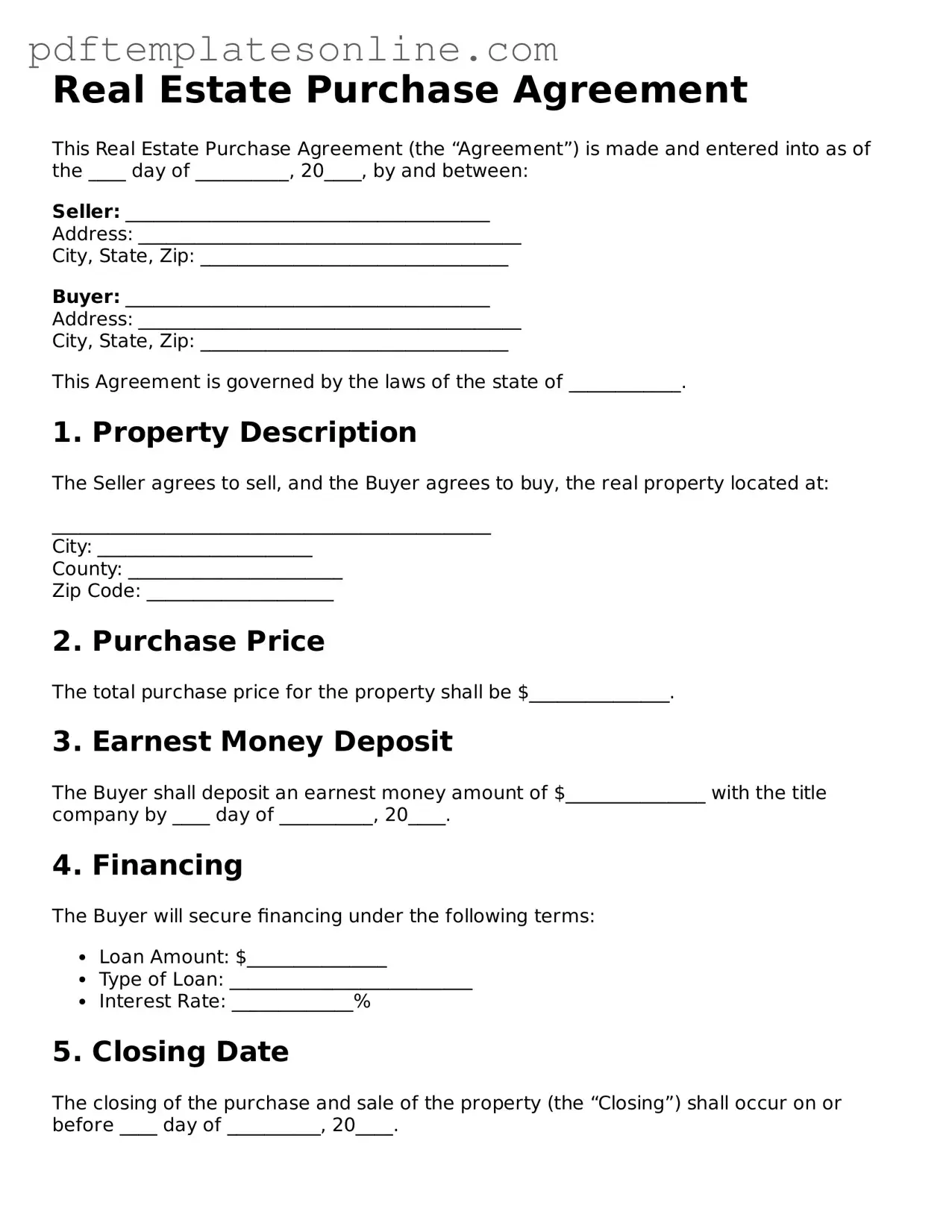Filling out a Real Estate Purchase Agreement can be a daunting task, and mistakes can lead to delays or complications in the transaction. One common error is failing to provide accurate property descriptions. Buyers and sellers must ensure that the property address, legal description, and any included fixtures are clearly outlined. Omitting details can create confusion and potential disputes.
Another frequent mistake is neglecting to specify the purchase price. This is a critical element of the agreement. If the price is left blank or incorrectly stated, it can lead to misunderstandings. Always double-check that the amount reflects what both parties have agreed upon.
Many individuals also overlook the importance of including contingencies. Contingencies are conditions that must be met for the sale to proceed. Common examples include financing, inspections, and appraisals. Failing to include these can leave buyers vulnerable and unprotected.
Inaccurate dates can also pose a significant problem. Buyers should ensure that the closing date and any deadlines for contingencies are clearly stated. Missing or incorrect dates can lead to missed opportunities or legal issues.
Another mistake is not including all necessary signatures. Each party involved in the transaction must sign the agreement for it to be legally binding. If a signature is missing, it can invalidate the entire contract.
Buyers and sellers sometimes forget to clarify who is responsible for closing costs. This can lead to unexpected expenses and disputes later on. Clearly outlining these responsibilities in the agreement helps prevent misunderstandings.
In addition, failing to review the financing terms can create complications. Buyers should ensure that the agreement reflects their financing arrangements accurately. This includes the type of loan, interest rate, and any specific lender requirements.
Another common oversight is neglecting to include any special requests or agreements. If there are specific terms that both parties have discussed, such as repairs or included appliances, these should be documented in the agreement to avoid confusion later.
Moreover, not consulting with a real estate professional can lead to numerous mistakes. Having an experienced agent or attorney review the agreement can help catch errors and ensure that all necessary elements are included.
Lastly, individuals often fail to keep a copy of the signed agreement. It is essential to retain a copy for personal records and to refer back to if any issues arise. Keeping organized documentation helps ensure a smoother transaction process.
